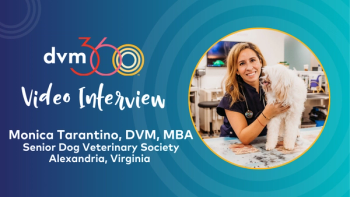
Dolly's arthritis: Veterinary laser therapy application near and far
A rehab specialist shares a real-world case where the modality, conducted in concert with the referring practice, made a difference.
One key to the effective rehabilitation of a veterinary patient is frequent appointments with the treating specialist, says
Maximum Matthew Brunke
Here he shares the case of a patient named Dolly. When it became impractical for Dolly's owners to continue twice weekly, four-hour round trips for treatment, Dr. Brunke referred the patient back to her normal veterinarian.
"They manage her with laser therapy twice a week," he says. "Then when she has problems or she has her flare-ups, they come back and see us and we'll re-inject her joints."
How successful is this approach? Dr. Brunke reports that the arrangement is working well after six months.
Watch the video for more.
You. Can. Do. This!
At Fetch dvm360 conference, we're the support system you need. With every conference this year, we intend to nurture your mind (meaning quality CE for days) while also encouraging you to take stock of your physical and emotional health.
Newsletter
From exam room tips to practice management insights, get trusted veterinary news delivered straight to your inbox—subscribe to dvm360.




